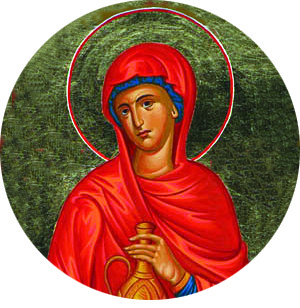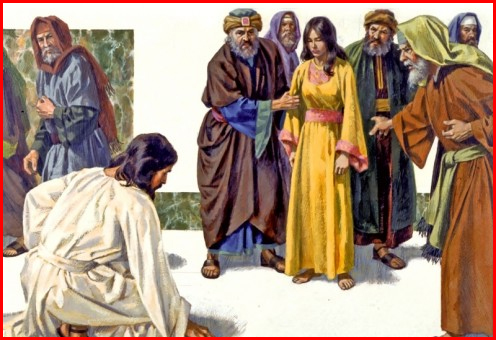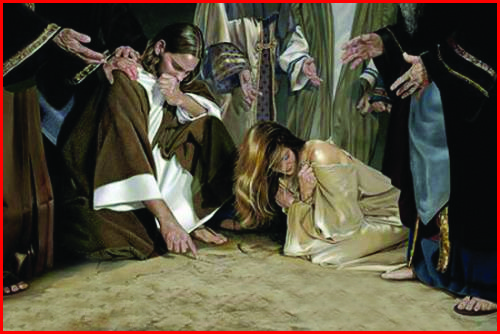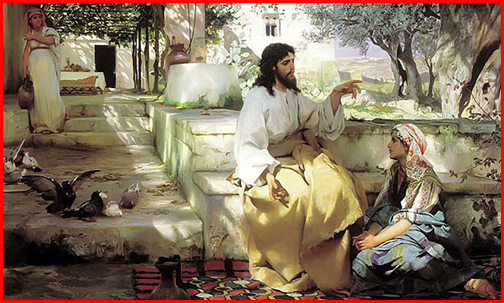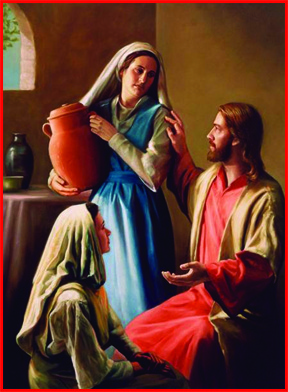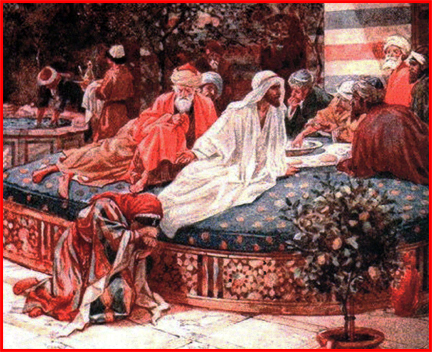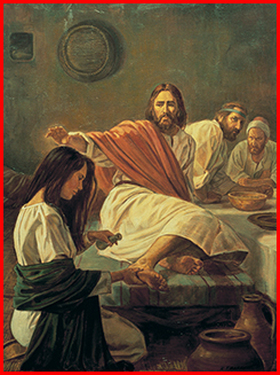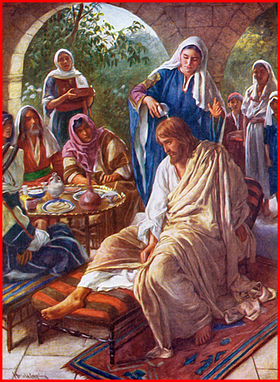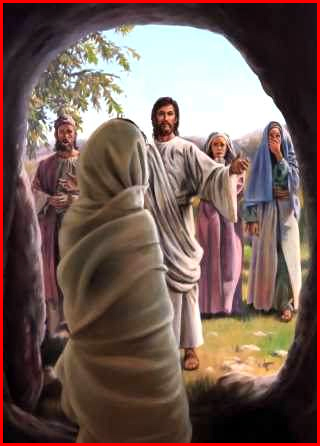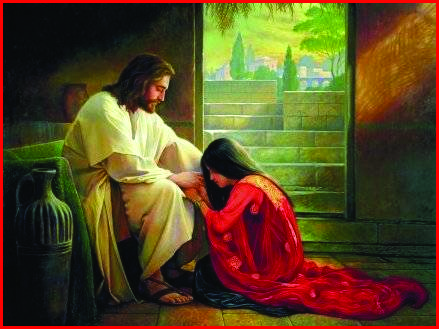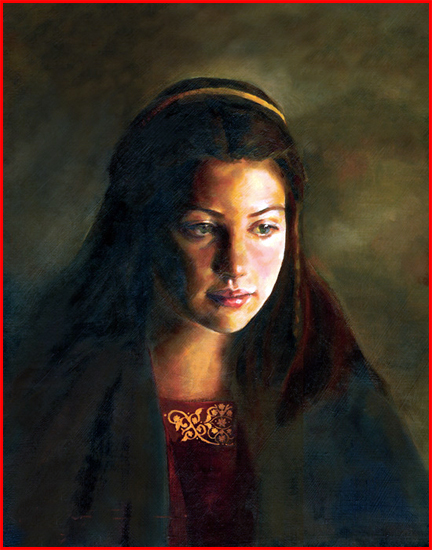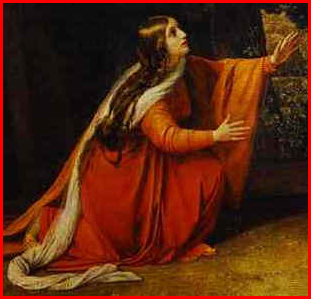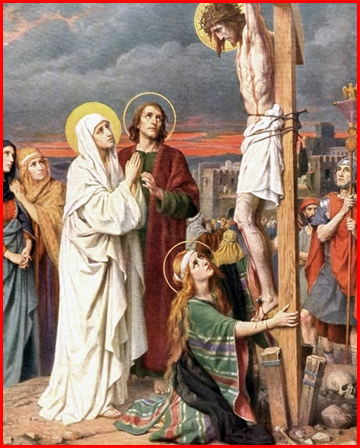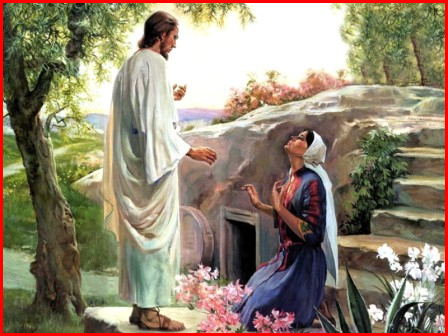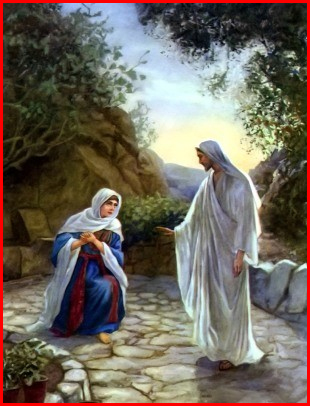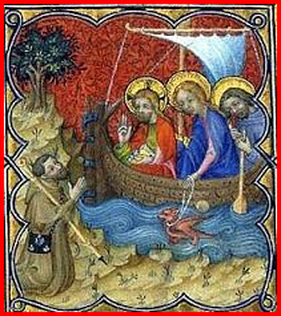| Devotion to Our Lady |
|
- Homepage
-
Daily Thoughts
- 2023 October Daily Thoughts
- Daily Thoughts Lent 2020
- Daily Thoughts for Advent 2019
- Daily Thoughts for October 2019
- Daily Thoughts for September 2019
- Daily Thoughts for August 2019
- Daily Thoughts for July
- Daily Thoughts for June
- Daily Thoughts for Easter 2019
- Daily Thoughts for Lent 2019
- Daily Thoughts for Christmas
- Daily Thoughts Easter 2022
- Sacred Heart
- Holy Ghost
-
Spiritual Life
- Holy Mass Explained
- First Friday Devotions
- First Saturday Devotions
- The Mercy of God
- Vocations
- The Path Everyone Must Walk >
- Gift of Failure
- Halloween or Hell-O-Ween?
- Ignatian Spiritual Exercises >
- Meditation is Soul-Saving
- Spiritual Communion
- Miraculous Medal
- Enrollment in Miraculous Medal
- St. Benedict Medal
- Holy Water
- Advice on Prayer
- Your Daily Mary
-
Prayers
- September Devotions
- Seven Sorrows of Our Lady
-
Novenas
>
- NV-Help of Christians
- NV-Nativity of Our Lady
- NV-Seven Sorrows
- NV- Sorrowful Heart
- NV-Pope St Pius X
- NV-La Salette
- NV-St Michael Archangel
- NV-Immaculate Heart
- NV-Assumption
- NV-Novena for Fathers
- NV-Novena for Your Mother
- NV-St Raphael Archangel
- NV-Souls in Purgatory
- NV-All Saints Day
- NV-Christ the King
- NV-Divine Motherhood
- NV-Guardian Angels
- NV-Rosary
- NV-Mirac Med
- NV- Imm Conc
- NV - Guadalupe
- NV - Nativity of Jesus
- NV-Epiphany
- NV-OL Good Success
- NV-Lourdes
- NV-St Patrick
- NV-St Joseph
- NV-Annunciation
- NV-St Louis de Montfort
- NV-OL Good Counsel
- NV-Last Supper
- NV-Passion
- NV-Pentecost
- NV-Ascension
- NV-Sacred Heart
- NV-Sacred Heart & Perpetual Help
- NV-Corpus Christi
- NV-OL of Perpetual Help
- NV-Queenship BVM
- NV-OL of Mount Carmel
- NV-St Mary Magdalen
- NV- Im Hrt
- August Devotions to IHM
- Immaculate Heart of Mary
- Litany of Dependence
- Prayers to St Mary Magdalen
- Prayers in Times of Sickness Disease & Danger
- Holy Souls in Purgatory
- Meditations on the Litany of Our Lady
- Special Feast Days
- Prayers to Mary (Mon-Sun)
- Litanies to Our Lady >
- Various & Special Needs
- Our Lady of the Rosary
- Our Lady of Mt. Carmel
- Our Lady of Perpetual Help
- Our Lady of Guadalupe
- Other titles of Our Lady
-
Rosary
- Downloads
- Consecration
- Easter Season
-
Holy Week
- Last Seven Words of Jesus >
- Characters of Passion >
- The Last Days of Christ
- Before Palm Sunday
- Palm Sunday
- Monday in Holy Week
- Tuesday in Holy Week
- Wednesday in Holy Week
- Holy Thursday (Last Supper)
- Holy Thursday (Agony & Arrest)
- Night Vigil with Christ
- Good Friday (Pilate & Herod)
- Good Friday (Way of Cross & Crucifixion)
- Saturday in Holy Week
-
Lent
- Ideas for Lent
- Daily Lenten Planner
- Daily Lenten Liturgy
- From Cold to Hot
- Lent with Aquinas
- Lent with Dom Gueranger
- Virtues for Lent
- History of Penance
- How Expensive is Sin?
- Confession of Sins
- Letter to Friends of the Cross
- Sermons for Lent
- Stations of the Cross >
- Lenten Prayers
- 7 Penitential Psalms
- Lenten Psalms SUN
- Lenten Psalms MON
- Lenten Psalms TUE
- Lenten Psalms WED
- Lenten Psalms THU
- Lenten Psalms FRI
- Lenten Psalms SAT
- Lenten Laughs
- Septuagesima
-
Christmas
- Epiphany Explained
- Suggestions for Christmas
- Food For Thought
- Christmas with Aquinas
- Christmas with Dom Gueranger
- Christmas Prayers
- Candles & Candlemas
- Christmas Sermons
- Christmas Prayers SUN
- Christmas Prayers MON
- Christmas Prayers TUE
- Christmas Prayers WED
- Christmas Prayers THU
- Christmas Prayers FRI
- Christmas Prayers SAT
- Twelve Days of Christmas >
-
Advent Journey
- Purgatory
- Christ the King
- Legion of Mary
- Scapular
-
Saints
-
Martyrs for the Faith
>
- Your Daily Martyr >
- All 365 Days of Martyrs
- Cristeros
- St Valentine & Valentine's Day
- Martyrs--Thomas Becket
- Martyrs--John the Apostle
- Holy Machabees
- Age of Martyrdom
- Carmelites of Compiegne
- Martyrs--Peter & Paul
- Martyrs--John the Baptist
- Martyrs--Andrew
- Martyrs--James the Great
- Martyrs--North American
- Martyrs--Seven Holy Sleepers
- Martyrs--Afra
- School of Martyrdom
- Martyrs--Christina
- Desert Saints >
- Saints for Sinners >
- Saints of Mary >
- History of All Saints Day
-
Martyrs for the Faith
>
- Precious Blood
- Synod 2023
-
Catechism
- Catechism Lesson 1
- Catechism Lesson 2
- Catechism Lesson 3
- Catechism Lesson 4
- Catechism Lesson 5
- Catechism Lesson 6
- Catechism Lesson 7
- Catechism Lesson 8
- Catechism Lesson 9
- Catechism Lesson 10
- Catechism Lesson 11
- Catechism Lesson 12
- Catechism Lesson 13
- Catechism Lesson 14
- Catechism Lesson 15
- Catechism Lesson 16
- Catechism Lesson 17
- Catechism Lesson 18
- Catechism Lesson 19
- Catechism Lesson 20
- Catechism Lesson 21
- Catechism Lesson 22
- Bible Study
-
Calendar
- Miracles
- Apparitions
- Shrines
- Prophecies
- Angels Homepage
- Hell
-
Church Crisis
- Conspiracy Theories
- Amazon Synod 2019 >
- Liberalism & Modernism
- Modernism--Encyclical Pascendi
- Modernism & Children
- Modernism--Documents
- The Francis Pages
- Church Enemies on Francis
- Francis Quotes
- Amoris Laetitia Critique
- Danger of Ignorance (Pius X)
- Restore all In Christ (Pius X)
- Catholic Action (Pius X)
- Another TITANIC Disaster?
- The "Errors of Russia"
- CRISIS PRAYERS
- Election Novena 2024
- The Anger Room
- War Zone
- Life of Mary
- Spiritual Gym
- Stupidity
- Coronavirus and Catholicism
- History & Facts
- Books
- Catholic Family
- Children
- Daily Quiz
-
Novena Church & Pope
- Day 01 Church-Pope Novena
- Day 02 Church-Pope Novena
- Day 03 Church-Pope Novena
- Day 04 Church-Pope Novena
- Day 05 Church-Pope Novena
- Day 06 Church-Pope Novena
- Day 07 Church-Pope Novena
- Day 08 Church-Pope Novena
- Day 09 Church-Pope Novena
- Day 10 Church-Pope Novena
- Day 11 Church-Pope Novena
- Day 12 Church-Pope Novena
- Day 13 Church-Pope Novena
- Day 14 Church-Pope Novena
- Day 15 Church-Pope Novena
- Day 16 Church-Pope Novena
- Day 17 Church-Pope Novena
- Day 18 Church-Pope Novena
- Day 19 Church-Pope Novena
- Day 20 Church-Pope Novena
- Day 21 Church-Pope Novena
- Day 22 Church-Pope Novena
- Day 23 Church-Pope Novena
- Day 24 Church-Pope Novena
- Day 25 Church-Pope Novena
- Day 26 Church-Pope Novena
- Day 27 Church-Pope Novena
- Day 28 Church-Pope Novena
- Day 29 Church-Pope Novena
- Day 30 Church-Pope Novena
- Day 31 Church-Pope Novena
- Day 32 Church-Pope Novena
- Day 33 Church-Pope Novena
- Day 34 Church-Pope Novena
- Day 35 Church-Pope Novena
- Day 36 Church-Pope Novena
- Day 37 Church-Pope Novena
- Day 38 Church-Pope Novena
- Day 39 Church-Pope Novena
- Day 40 Church-Pope Novena
- Day 41 Church-Pope Novena
- Day 42 Church-Pope Novena
- Day 43 Church-Pope Novena
- Day 44 Church-Pope Novena
- Day 45 Church-Pope Novena
- Day 46 Church-Pope Novena
- Day 47 Church-Pope Novena
- Day 48 Church-Pope Novena
- Day 49 Church-Pope Novena
- Day 50 Church-Pope Novena
- Day 51 Church-Pope Novena
- Day 52 Church-Pope Novena
- Day 53 Church-Pope Novena
- Day 54 Church-Pope Novena
- Penance Novena
- Daily WeAtheR Forecast
CLICK ON THE NAME OF THE SAINT YOU WISH TO VIEW
(not all links are activated at this time)
THE ROMAN MARTYROLOGY FOR EACH MONTH OF THE YEAR
| January | February | March | April | May | June | July | August | September | October | November | December | All 365 Days on One Page |
MARTYRED SAINTS
| Your Daily Martyr | The Age of Martyrdom (20th & 21st centuries) | The School of Martyrdom | St. Peter the Apostle | St. Paul of Tarsus | St. James the Great |
| St. Andrew | St. John the Baptist | The North American Martyrs | St. Christina | St. Afra | The Seven Holy Sleepers | The Cristeros of Mexico |
SAINTS OF MARY
| St. Louis-Marie de Montfort | St. Dominic | St. John Eudes | St. Maximilian Kolbe | St. Bernard | St. Alphonsus Liguori | St. Ephrem |
| St. Catherine Laboure | St. Bernadette | St. Bridget | St. Catherine of Siena | Pope St. Pius X |
DESERT SAINTS
| Saints of the Desert | St. Paul the Hermit | St. Anthony of Egypt | Desert Father Wisdom |
SAINTS FOR SINNERS
| St. Paul of Tarsus | St. Augustine | St. Mary Magdalen | Dismas the Good Thief |
(not all links are activated at this time)
THE ROMAN MARTYROLOGY FOR EACH MONTH OF THE YEAR
| January | February | March | April | May | June | July | August | September | October | November | December | All 365 Days on One Page |
MARTYRED SAINTS
| Your Daily Martyr | The Age of Martyrdom (20th & 21st centuries) | The School of Martyrdom | St. Peter the Apostle | St. Paul of Tarsus | St. James the Great |
| St. Andrew | St. John the Baptist | The North American Martyrs | St. Christina | St. Afra | The Seven Holy Sleepers | The Cristeros of Mexico |
SAINTS OF MARY
| St. Louis-Marie de Montfort | St. Dominic | St. John Eudes | St. Maximilian Kolbe | St. Bernard | St. Alphonsus Liguori | St. Ephrem |
| St. Catherine Laboure | St. Bernadette | St. Bridget | St. Catherine of Siena | Pope St. Pius X |
DESERT SAINTS
| Saints of the Desert | St. Paul the Hermit | St. Anthony of Egypt | Desert Father Wisdom |
SAINTS FOR SINNERS
| St. Paul of Tarsus | St. Augustine | St. Mary Magdalen | Dismas the Good Thief |
ST. MARY MAGDALEN
Hope for Penitent Sinners
Hope for Penitent Sinners
|
Mary Magdalen, Penitent Extraordinaire
Today, July 22nd, we celebrate the feast of St. Mary Magdalen. It is very appropriate that her feast falls in the month of the Precious Blood, for, in her, the Precious Blood was extremely effective and powerful. She is not just a sinner, but a great sinner, who became a great saint. Mary Magdalen―or Mary of Magdala and sometimes called “The Magdalene”―is a key religious figure in Christianity. She is usually thought of as the second-most important woman in the New Testament, after Mary, the Mother of Jesus. Mary Magdalene traveled with Jesus as one of His followers. She was present at Jesus’ two most important moments: the Crucifixion and the Resurrection. Within the four Gospels, the oldest historical record mentioning her name, she is named at least 12 times―more than most of the Apostles. The Gospel references describe her as courageous, brave enough to stand by Jesus in His hours of suffering, death and beyond. The notion of Mary Magdalene being a repentant sinner, can be traced at least as far back as St. Ephraim the Syrian, in the fourth century, and became the generally accepted view in Western Christianity after the homily of Pope Gregory I (“Gregory the Great”) in about 591. Gregory is one of the most influential and authoritative popes, and, in a famous series of sermons on Mary Magdalene, given in Rome, he identified Magdalen, not only with the anonymous sinner with the perfume in Luke’s Gospel, but also with Mary of Bethany, the sister of Martha and Lazarus; this interpretation is often called the “composite Magdalene” in modern parlance. Who is this Mary? Pope St. Gregory the Great says: “Thinking upon the repentance of Mary Magdalen, I am more ready to weep than to say anything. For what heart of stone would not be softened to a like repentance by the tears of this sinner? She considered what she had done, and would not be moderate in what she was then doing. She broke in upon the guests, she came uninvited, she brought her tears to the banquet. You may understand with what sorrow she burns, in that she is not ashamed to weep even at a feast. “But this woman, whom Luke calls a woman who was a sinner, is named by John—it is Mary; and we believe she was that Mary from whom, as Mark bears witness, seven devils were cast forth. And what is typified by seven devils, if not all the vices? For since all time is counted by periods of seven days, by the number seven, completeness is rightly represented. Mary then had seven devils, because she was full of all the vices. “But, behold, when she saw the stains of her foulness, she ran to wash herself at the fountain of mercy, and had no shame before the guests. Indeed, since she felt so much shame in herself, she counted it as nothing to be outwardly disgraced. At what, then, do we marvel, my brethren? That Mary came, or that the Lord received her? “Received her,” shall I say, or not rather, “drew her?” But it is better to say: “both drew her and received her.” For, in His mercy, He drew her inwardly, and, in His meekness, He received her outwardly.” (Pope St. Gregory the Great, Homily 33 on the Gospels). ANOTHER TRANSLATION “Whenever I ponder the penitential spirit of Mary Magdalene, I feel more like weeping than like speaking. For the tears of this sinful woman will soften even a heart of stone, towards the idea of doing penance. Having reflected on what she had done, she did not wish to set bounds to what she should do. She came in, uninvited, after the meal had begun, and brought her tears to the banquet. See with what grief she must burn, when she is not ashamed to weep even at a banquet. “This woman, whom Luke calls “a sinful woman,” is called Mary by John. We think she is that Mary from whom, according to Mark’s testimony, seven devils were driven out. What would be designated by seven devils but the totality of vice? The number seven is a fitting figure for a totality. For example, all time is perceived in terms of the seven days. And so Mary had seven devils, because she abounded in all the vices. “But note that she looked at the stains of her sinfulness and then ran to be washed at the fountain of mercy. The dinner guests did not embarrass her. For since she was, inwardly, so deeply ashamed of herself, she considered the outward embarrassment as nothing. What should we admire, brothers: Mary’s coming or the Lord’s receiving her? “Receiving”, or should I say, or “drawing her” to Himself? I should rather say: “drawing her to Himself and receiving her.” For there is no doubt that He, who in His gentleness received her outwardly, was, in His mercy, drawing her inwardly” (Pope St. Gregory the Great, Homily 33 on the Gospels). Three Marys? Two Marys? Or One Mary? The Greek Fathers, as a whole, and today’s modern scholars, distinguish three persons: • Mary the “sinner” of Luke 7:36-50; • Mary the sister of Martha and Lazarus, Luke 10:38-42 and John 11; and • Mary Magdalen, from whom seven devils were cast out. On the other hand most of the Latins (Roman or Western Church) and traditional scholars and exegetes of Scripture, hold that these three were one and the same. It is conceivable that St. John, just because he is writing so long after the event, and at a time when Mary was dead, wishes to point out to us that she was really the same as the “sinner.” In the same way, St. Luke may have veiled her identity, precisely because he did not wish to defame someone who was still living; Luke does something similar in the case of St. Matthew, whom he refrains from identifying as Levi the Publican (5:7), and conceals the fact. If this argument of the traditional Western Church holds good, then “Mary of Bethany” and the “sinner” are one and the same. Furthermore, an examination of St. John’s Gospel makes it almost impossible to deny the identity of “Mary of Bethany” with “Mary Magdalen”. From St. John we learn the name of the “woman” who anointed Christ’s feet some time prior to the Last Supper, when Christ came to Bethany several days before the Passover. At that supper, then, Mary received the glorious praise of Christ, “she hath wrought a good work upon Me . . . in pouring this ointment upon My body she hath done it for My burial . . . wheresoever this Gospel shall be preached . . . that also which she hath done shall be told for a memory of her.” Can we believe, in view of all this, that this Mary should have no place at the foot of the cross, nor at the tomb of Our Lord? Yet it is Mary Magdalen who, according to all the Evangelists, stood at the foot of the cross and assisted at the burial of Our Lord and was the first recorded witness of the Resurrection. And while St. John calls her “Mary Magdalen” in 19:25, 20:1, and 20:18, he calls her simply “Mary” in 20:11 and 20:16. In the view we have advocated the series of events forms a consistent whole; the “sinner” comes early in the ministry to seek for pardon; she is described immediately afterwards as Mary Magdalen “out of whom seven devils were gone forth”; shortly after, we find her “sitting at the Lord’s feet and hearing His words.” To the Catholic mind it all seems fitting and natural. At a later period Mary and Martha turn to “the Christ, the Son of the Living God”, and He restores to them their brother Lazarus; a short time afterwards they make Him a supper and Mary once more repeats the act she had performed when a penitent. At the Passion she stands nearby; she sees Him laid in the tomb; and she is the first witness of His Resurrection—except for His Mother, to whom He must have appeared first, though the New Testament is silent on this point. In the view of many Catholic commentators, there were two anointings of Christ—it should surely be no difficulty that St. Matthew and St. Mark speak of Jesus’ head being anointed by the woman and then later, at another time, the anointing of Jesus’ feet—the first anointing (Luke 7) took place at a comparatively early date; the second, two days before the last Passover. But it was one and the same woman who performed this pious act on each occasion. Readings from Matins of Thursday after the First Sunday of Passiontide Commentary by Pope St. Gregory the Great (33rd Homily on the Gospels) on St. Luke’s Gospel (Luke 7:36-50). “At that time, one of the Pharisees desired him to eat with him. And he went into the house of the Pharisee, etc.” “When I think of the repentance of Mary Magdalene I feel more inclined to weep than to say anything! Is there indeed any man, however stony his heart, who is not somewhat moved to follow the example of her repentance, by the tears of that poor sinful woman? She weighed what she did, and would not that what she did should be niggardly. She came uninvited among the guests, and cast her tears upon the banquet. From that you might have an inkling of her sorrow, by the fact that she was inclined to weep at a feast. “We believe that this woman, of whom Luke says that she was a woman in the city, who was a sinner, and whom John names as “Mary” (John 11:2), was the same as she of whom it is written in Mark (16:9) that the Lord had cast out of her seven devils. And what signify seven devils but all manner of sin? For even as seven days do represent all time, so doth the number seven stand for all. Therefore is it said that Mary had seven devils, because she was full of all sin. “But see how she realized the depth of her own filthiness, and came to be washed to the Well of Mercy, before all them who had been invited to the feast. The bitterness of her interior shame made her esteem it a trivial thing to be despised outwardly. At what, then, do we marvel, my brethren? That she came, or that the Lord welcomed her? Or would it be truer for me to say that He drew her to Himself and welcomed her when she came? For His mercy inwardly drew her, and, when she came, His gentleness openly welcomed her.” (Pope St. Gregory the Great). The First Annointing (Luke 7:36-50) “And one of the Pharisees [i.e. Simon] desired to eat with Jesus. And Jesus went into the house of the Pharisee, and sat down to meat. And behold a woman that was in the city, a sinner, when she knew that Jesus sat at meat in the Pharisee’s house, brought an alabaster box of ointment; and, standing behind at His feet, she began to wash His feet with tears, and wiped them with the hairs of her head, and kissed His feet, and anointed them with the ointment. And the Pharisee, who had invited Him, seeing it, spoke within himself, saying: ‘This Man, if He were a prophet, would know surely who and what manner of woman this is that toucheth Him, that she is a sinner!’ And Jesus answering, said to him: ‘Simon, I have somewhat to say to thee!’ But he said: ‘Master, say it!’ “Jesus continued: ‘A certain creditor had two debtors, the one who owed five hundred pence, and the other fifty. And whereas they had not wherewith to pay, he forgave them both. Which therefore of the two loveth him most?’ Simon answering, said: ‘I suppose that he to whom he forgave most!’ And Jesus said to him: ‘Thou hast judged rightly!’ And turning to the woman, Jesus said unto Simon: ‘Dost thou see this woman? I entered into thy house, thou gavest Me no water for My feet; but she with tears hath washed My feet, and with her hairs hath wiped them. Thou gavest Me no kiss; but she, since she came in, hath not ceased to kiss My feet. My head with oil thou didst not anoint; but she with ointment hath anointed My feet. Wherefore I say to thee: Many sins are forgiven her, because she hath loved much! But to whom less is forgiven, he loveth less!’ And Jesus said to her: ‘Thy sins are forgiven thee!’ And they, that sat at meat with Him, began to say within themselves: ‘Who is this that forgiveth sins also?’ And Jesus said to the woman: ‘Thy faith hath made thee safe, go in peace!’” (Luke 7:36-50). The Second Annointing (Matthew 26:6-11; Mark 14:1-9) St. Matthew gives the following account: “And when Jesus was in Bethania, in the house of Simon the Leper [again], there came to Him a woman having an alabaster box of precious ointment, and poured it on His head as He was at table. And the disciples seeing it, had indignation, saying: ‘To what purpose is this waste? For this might have been sold for much, and given to the poor!’ And Jesus knowing it, said to them: ‘Why do you trouble this woman? For she hath wrought a good work upon Me! For the poor you have always with you: but Me you have not always. For she, in pouring this ointment upon My body, hath done it for My burial. Amen I say to you, wheresoever this Gospel shall be preached in the whole world, that also which she hath done, shall be told for a memory of her” (Matthew 26:6-11). Here is St. Mark’s account: “Now the feast of the pasch, and of the Azymes was after two days; and the Chief Priests and the Scribes sought how they might by some wile lay hold on Him, and kill Him. But they said: ‘Not on the festival day, lest there should be a tumult among the people!’ And when He was in Bethania, in the house of Simon the Leper, and was at meat, there came a woman having an alabaster box of ointment of precious spikenard: and breaking the alabaster box, she poured it out upon His head. Now there were some that had indignation within themselves, and said: ‘Why was this waste of the ointment made? For this ointment might have been sold for more than three hundred pence, and given to the poor!’ And they murmured against her. But Jesus said: ‘Let her alone, why do you molest her? She hath wrought a good work upon Me! For the poor you have always with you: and whensoever you will, you may do them good: but Me you have not always! She hath done what she could: she is come beforehand to anoint My body for burial. Amen, I say to you, wheresoever this Gospel shall be preached in the whole world, that also which she hath done, shall be told for a memorial of her!” (Mark 14:1-9). Mary of the Seven Devils In the New Testament she is mentioned among the women who accompanied Christ and ministered to Him (Luke 8:2-3), where it is also said that seven devils had been cast out of her (Mark 16:9). “And it came to pass afterwards, that Jesus travelled through the cities and towns, preaching and evangelizing the Kingdom of God; and the Twelve with Him; and certain women, who had been healed of evil spirits and infirmities; and Mary who is called Magdalen, out of whom seven devils were gone forth; … and many others who ministered unto Him of their substance” (Luke 8:1-2). St. Mark mentions her after the Resurrection of Jesus, saying: “Jesus, rising early the first day of the week, appeared first to Mary Magdalen, out of whom He had cast seven devils” (Mark 16:9). The seven devils, removed from her by Jesus, gradually came to symbolize the Seven Capital Sins (also known as the Seven Deadly Sins), and Mary Magdalene began to be condemned, not only for lust, but for pride, covetousness, and all the remaining Capital Sins as well. Mary the Dead Man’s Sister We see Mary in chapter 11 of St. John’s Gospel (verses 1-45), with her sister and brother—Martha and Lazarus: “Now there was a certain man sick, named Lazarus, of Bethania, of the town of Mary and Martha her sister. And Mary was she that anointed the Lord with ointment, and wiped His feet with her hair: whose brother Lazarus was sick. His sisters therefore sent to Him, saying: ‘Lord, behold, he whom Thou lovest is sick!’ And Jesus hearing it, said to them: ‘This sickness is not unto death, but for the glory of God: that the Son of God may be glorified by it!’ “Now Jesus loved Martha, and her sister Mary, and Lazarus. When He had heard therefore that he was sick, He still remained in the same place two days. Then after that, He said to His disciples: ‘Let us go into Judea again!’ The disciples say to Him: ‘Rabbi, the Jews but now sought to stone Thee: and goest Thou thither again?’ Jesus answered: ‘Are there not twelve hours of the day? If a man walk in the day, he stumbleth not, because he seeth the light of this world: But if he walk in the night, he stumbleth, because the light is not in him.’ “These things He said; and after that He said to them: ‘Lazarus our friend sleepeth; but I go that I may awake him out of sleep!’ His disciples therefore said: ‘Lord, if he sleep, he shall do well!’ But Jesus spoke of His death; and they thought that He spoke of the repose of sleep. Then therefore Jesus said to them plainly: ‘Lazarus is dead! And I am glad, for your sakes, that I was not there, that you may believe: but let us go to him!’ Thomas therefore, who is called Didymus, said to his fellow disciples: ‘Let us also go, that we may die with Him!’ [Thomas said this in the expectation that the enemies of Jesus would apprehend Him and kill Him if He went back into their territory]. “Jesus therefore came, and found that he had been four days already in the grave. Now Bethania was near Jerusalem, about fifteen furlongs off. And many of the Jews were come to Martha and Mary, to comfort them concerning their brother. Martha therefore, as soon as she heard that Jesus had come, went to meet Him: but Mary sat at home. Martha therefore said to Jesus: ‘Lord, if Thou hadst been here, my brother had not died. But now also I know that whatsoever Thou wilt ask of God, God will give it Thee.’ Jesus saith to her: ‘Thy brother shall rise again!’ Martha saith to Him: I know that he shall rise again, in the resurrection at the last day!’ Jesus said to her: ‘I am the resurrection and the life: he that believeth in Me, although he be dead, shall live: and every one that liveth, and believeth in Me, shall not die for ever. Believest thou this?’ She saith to Him: Yes, Lord, I have believed that Thou art Christ the Son of the living God, Who art come into this world!’ And when she had said these things, she went, and called her sister Mary secretly, saying: ‘The Master is come, and calleth for thee.’ She, as soon as she heard this, rose quickly, and came to Him. For Jesus was not yet come into the town: but He was still in that place where Martha had met Him. “The Jews therefore, who were with her in the house, and comforted her, when they saw Mary that she rose up speedily and went out, followed her, saying: ‘She goes to the grave to weep there!’ When Mary therefore was come where Jesus was, seeing Him, she fell down at His feet, and said to Him: ‘Lord, if Thou hadst been here, my brother had not died!’ Jesus, therefore, when He saw her weeping, and the Jews that were come with her, weeping, groaned in the spirit, and troubled Himself, and said: ‘Where have you laid him?’ They say to Him: ‘Lord, come and see!’ And Jesus wept. “The Jews therefore said: ‘Behold how He loved him!’ But some of them said: ‘Could not He that opened the eyes of the man born blind, have caused that this man should not die?’ Jesus, therefore, again groaning in Himself, came to the sepulcher. Now it was a cave; and a stone was laid over it. Jesus said: ‘Take away the stone!’ Martha, the sister of him that was dead, said to Him: ‘Lord, by this time he stinketh, for he is now of four days!’ Jesus said to her: ‘Did not I say to thee, that if thou believe, thou shalt see the glory of God?’ “They took therefore the stone away. And Jesus lifting up His eyes said: ‘Father, I give Thee thanks that Thou hast heard Me. And I knew that Thou hearest Me always; but because of the people who stand about have I said it, that they may believe that Thou hast sent Me!’ When He had said these things, He cried with a loud voice: ‘Lazarus, come forth!’ And presently he, that had been dead, came forth, bound feet and hands with winding bands; and his face was bound about with a napkin. Jesus said to them: ‘Loose him, and let him go!’ Many therefore of the Jews, who were come to Mary and Martha, and had seen the things that Jesus did, believed in Him.” (John 11:1-45). Mary Passionate for the Word of God We also see Mary mesmerized by the Word of God, in that she is sitting at the feet of Christ listening to His every word, while her sister, Martha, is left to prepare the meal for Our Lord. We could be tempted to think that Mary is lazy, but not in the opinion of Our Lord. Martha does a good thing in feeding Our Lord, but Mary does even better by letting Our Lord feed her: “Not in bread alone doth man live, but in every word that proceedeth from the mouth of God” (Matthew 4:4). “Now it came to pass as they went, that Jesus entered into a certain town: and a certain woman, named Martha, received Him into her house. And she had a sister called Mary, who sitting also at the Lord’s feet, heard His word. But Martha was busy about much serving. Who stood and said: ‘Lord, hast Thou no care that my sister hath left me alone to serve? Speak to her therefore, that she help me!’ And the Lord answering, said to her: ‘Martha, Martha, thou art careful, and art troubled about many things! But one thing is necessary! Mary hath chosen the best part, which shall not be taken away from her!’” (Luke 10:38-42). Mary the Passionate Woman We sense, from all these accounts, that Mary was a passionate woman―passionate in sin; passionate in her repentance; passionate in hearing the Word of God. There is nothing wrong with being passionate, provided the passion is channeled into morally correct areas. Initially, Mary’s passions were misguided and sinful in their goals―after her conversion, the passions remained, but were correctly guided. The natural passion becomes elevated into a supernatural domain. God wants us to be passionate, but in the right way. What else but passionate love is demanded is this statement made by Christ: “Thou shalt love the Lord thy God, with thy whole heart, and with thy whole soul, and with thy whole mind, and with thy whole strength” (Mark 12:30). We see a similar passion to Mary Magdalen’s in St. Peter, who is always making an outward show of his love for the Lord. Likewise in St. Paul, whose misguided passions made him a persecutor of Christians, but, after his conversion, the passions remain, but are harnessed to working for Christ, rather than opposing Him. Our relationship with God, here below, rests upon the three theological virtues―Faith, Hope and Charity. In this incident with Mary Magdalen, we see all three combine together to create this beautiful scene and wonderful result. Here we see that many sins are forgiven her, because she hath loved much. Yet that love followed on the heels of Mary’s Faith (in knowing who Jesus was and what He was capable of doing) and Mary’s Hope (whereby she had confidence that Jesus might use His power to show her mercy). In the Scripture account an effect sometimes seems attributed to one only cause, when there are divers other concurring dispositions; for the sins of this woman, in this verse, are said to be forgiven “because she hath loved much”, but Christ also tells her: “Thy Faith hath made thee safe.” Here “Faith” can be seen in a twofold way: “Faith” in the form of belief in Christ’s Power and “Faith” in the form of confidence that He will use that power upon her. She would not have entered the banquet if she had no hope of receiving what she wanted from Jesus. Hence in a true conversion, as we see in this case, there are joined together Faith, Hope, Love, sorrow for sin, and other virtuous dispositions. Mary at the Foot of the Cross Mary Magdalen is next named as standing at the foot of the cross (Mark 15:40; Matthew 27:56; John 19:25; Luke 23:49). She saw Christ laid in the tomb, and she was the first recorded witness of the Resurrection. “Now there stood by the cross of Jesus, His mother, and His mother’s sister, Mary of Cleophas, and Mary Magdalen” (John 19:25). “And there were there many women afar off, who had followed Jesus from Galilee, ministering unto Him: among whom was Mary Magdalen, and Mary the mother of James and Joseph, and the mother of the sons of Zebedee” (Matthew 27:55-56). “And there were also women looking on afar off: among whom was Mary Magdalen, and Mary the mother of James the less and of Joseph, and Salome: who also when He was in Galilee followed Him, and ministered to Him, and many other women that came up with Him to Jerusalem” (Mark 15:40-41). “And all His acquaintance, and the women that had followed Him from Galilee, stood afar off, beholding these things” (Luke 23:49). Mary and the Risen Christ “And the women that were come with Him from Galilee, following after, saw the sepulcher, and how His body was laid. And on the first day of the week, very early in the morning, they came to the sepulcher, bringing the spices which they had prepared. And they found the stone rolled back from the sepulcher. And going in, they found not the Body of the Lord Jesus. And it came to pass, as they were astonished in their mind at this, behold, two men stood by them, in shining apparel. And as they were afraid, and bowed down their countenance towards the ground, they said unto them: ‘Why seek you the living with the dead? He is not here, but is risen!’ And going back from the sepulcher, they told all these things to the Eleven, and to all the rest. And it was Mary Magdalen, and Joanna, and Mary of James, and the other women that were with them, who told these things to the Apostles. And these words seemed to them as idle tales; and they did not believe them” (Luke 23:55; 24:1-11) “And on the first day of the week, Mary Magdalen cometh early, when it was yet dark, unto the sepulcher; and she saw the stone taken away from the sepulcher. She ran, therefore, and cometh to Simon Peter, and to the other disciple whom Jesus loved, and saith to them: ‘They have taken away the Lord out of the sepulcher, and we know not where they have laid Him!’ Peter and that other disciple both ran together, and that other disciple did outrun Peter, and came first to the sepulcher. Simon Peter went into the sepulcher, then that other disciple also went in and he saw, and believed. The disciples therefore departed again to their home. But Mary stood outside the sepulcher, weeping. Now as she was weeping, she stooped down, and looked into the sepulcher, and she saw two angels in white, sitting, one at the head, and one at the feet, where the Body of Jesus had been laid. They say to her: ‘Woman, why weepest thou?’ She saith to them: ‘Because they have taken away my Lord; and I know not where they have laid Him!’ When she had thus said, she turned herself back, and saw Jesus standing; and she knew not that it was Jesus. Jesus saith to her: ‘Woman, why weepest thou? Whom seekest thou?’ She, thinking it was the gardener, saith to Him: ‘Sir, if Thou hast taken Him hence, tell me where Thou hast laid Him, and I will take Him away!’ Jesus saith to her: ‘Mary!’ She turning, saith to Him: ‘Rabboni!’ (which is to say, Master). Jesus saith to her: ‘Do not touch Me, for I am not yet ascended to My Father. But go to My brethren, and say to them: “I ascend to My Father and to your Father, to My God and your God.”’ Mary Magdalen cometh, and telleth the disciples: ‘I have seen the Lord, and these things He said to me!’” (John 21:1-18). Subsequent history of Mary Magdalen The Greek Church maintains that the Mary Magdalen retired to Ephesus, with the Blessed Virgin, and there died, that her relics were transferred to Constantinople in 886 and are there preserved. St. Gregory of Tours (De miraculis, I, xxx) supports the statement that she went to Ephesus. It is an ancient popular tradition of the inhabitants of Provence, in France, that St. Mary Magdalen, or perhaps Mary, the sister of Lazarus, St. Martha, and St. Lazarus, with some other disciples of Our Lord, after His ascension, being expelled by the Jews, were put to sea without oars or sails, but landed safely at Marseilles, of which church they were the founders, St. Lazarus being made the first bishop of that city. However, according to a French tradition, Mary, Lazarus, and some companions came to Marseilles (on the southern coast of France) and converted the whole of Provence. Mary Magdalen is said to have retired to a nearby hill, La Sainte-Baume, where she gave herself up to a life of penance for thirty years. When the time of her death arrived, it is said that she was carried by angels to the town of Aix and into the oratory of St. Maximinus, where she received the viaticum; her body was then laid in an oratory, constructed by St. Maximinus, at Villa Lata, afterwards called St. Maximin. The relics of these saints were discovered in Provence in the thirteenth century, those of St. Mary Magdalen at a place now called St. Maximin’s, those of St. Martha at Tarascon, upon the Rhone, and others in St. Victor’s, at Marseilles. They were authentically proved genuine by many monuments found with them in these several places. Charles I, King of Naples, and brother of St. Louis, was at that time sovereign count of Provence; but he being then in Naples, engaged in war with the house of Arragon, his son, Charles of Anjou, prince of Salerno, governed Provence. This prince was beaten at sea by the fleet of the King of Arragon in 1284, and taken prisoner; and though his father died the year following, he could not recover his liberty before the year 1288. He ascribed his deliverance to the intercession of St. Mary Magdalen, the discovery of whose relics had excited his devotion to her: he had already founded the church of St. Maximin’s upon the spot where they were discovered, and assisted at the solemn translation of them in 1279. He committed this royal foundation to the Dominican friars, and the prior, who is nominated by the king, is exempt from the ordinary jurisdiction both of the archbishop of Aix, and of the immediate superiors of his order. The chief parts of the relics of St. Mary Magdalen were transferred from the subterraneous chapel in the middle of this church, and being put in a porphyry urn, and placed over the high altar. King Louis XIV, and the principal noblemen of his court, were present at this translation, which was performed with great pomp in 1660. The saint’s head, with many other relics, remains in the underground chapel; it is set in a gold case, enchased with large diamonds, and surmounted with the royal crown of Charles II, styled King of Sicily or Naples. Before it is a curious statue of Queen Anne of Brittany, on her knees, made of enameled gold. In 1814, the church of La Sainte-Baume, wrecked during the French Revolution (which began in 1789), was restored, and, in 1822, the grotto was consecrated afresh. The head of the saint now lies there, where it has lain so long, and where it has been the center of so many pilgrimages. About 9 miles from St. Maximin’s, towards Marseilles, is a famous solitary convent of Dominicans, situated on a very high rock, encompassed on every side with wild deserts and mountains. It is called La Sainte Baume (Holy Balm); which in the Provençal language signifies Holy Cave. It was anciently a celebrated hermitage, and is a place now resorted to by pilgrims, out of devotion to this glorious saint. Both Latins and Greeks keep the festival of St. Mary Magdalen on the 22d of July; it was, in some places, a holiday of obligation, and was such formerly in England, as appears from the Council of Oxford in 1222. The pious Cardinal Berulle was most tenderly devoted to this great saint, whom he called his principal patroness; and nothing can be more affecting in sentiments of compunction and divine love than the discourses which he has left us in her honor. She is the excellent model of penitents. If we have sinned, why do not we by her example speedily lay hold of the sovereign remedy of penance? If violent temptations, and terrible enemies seem to stand in our way, if the world allure us, if the devil fight fiercely against us, and unbridled passions are rebellious and clamorous, other penitents have courageously surmounted greater obstacles than we can meet with. God incites us no less than He did them, and He is no less ready to fight in us, and for us. Jesus holds out the crown to encourage us, and has already prepared the banquet of spiritual joy and sweetness for us at our return. If we arise in earnest He will come, and will make His solemn supper in our soul; and there will be exultation and a voice resounding praise through the whole heavenly court; but we must never think our penance accomplished, must never put a stop to our tears so long as we remember that we have sinned: God prolongs our life that we may continue to weep for our ingratitude in having offended Him. If our conversion be sincere, to make amends for past losses and offences, we must consecrate to the divine service with the utmost fervor all our time, and all that we are to do. The Magdalen, after Jesus Christ had rendered Himself master of her soul, had neither heart nor liberty but to give herself entirely to her deliverer. Learning from Mary Magdalen There are several simple, yet beautiful, lessons that we can learn from Mary Magdalen. • Firstly, the fact that God loves the sinner, but hates the sin. • Secondly, that love is a powerful penance. • Thirdly, the ever-present humility that wins God’s favor. God Loves the Sinner, but Hates the Sin We would find it difficult to find a greater sinner than Mary Magdalen. She was possessed by seven devils and her life of sin was no secret, but well-known by the community. Yet after all that, Holy Scripture tells us: “Now Jesus loved Martha, and her sister Mary, and Lazarus” (John 11:5). It does not say: “Jesus loved Martha and Lazarus, and only tolerated or put up with Mary.” No! St. John says “Jesus loved … Mary!” The New Testament God is no different from the Old Testament God: “Is it My will that a sinner should die, saith the Lord God, and not that he should be converted from his ways, and live?” (Ezechiel 18:23). “Go then and learn what this meaneth, ‘I will have mercy and not sacrifice!’ For I am not come to call the just, but sinners” (Matthew 9:13). “They that are in health need not a physician, but they that are ill” (Matthew 9:12). Love is a Powerful Penance Our Lord said of Mary Magdalen: “Many sins are forgiven her, because she hath loved much” (Luke 7:47). Again, this is nothing different or new to what God had pronounced in the Old Testament: “Charity covereth all sins” (Proverbs 10:12). In New Testament times, St. Peter, having witnessed Our Lord’s mercy and words concerning Mary Magdalen, says: “Before all things have a constant mutual charity among yourselves: for charity covereth a multitude of sins” (1 Peter 4:8). For God is charity itself: “God is charity: and he that abideth in charity, abideth in God, and God in him … He that loveth not, knoweth not God: for God is charity” (1 John 4:16; 4:8). Ultimately, love brings pain! Ultimately, it means laying down the world for Christ, or even our lives for Christ. “Greater love than this no man hath, that a man lay down his life for his friends” (John 15:13). Ever-Present Humility Wins God’s Favor Mary Magdalen always seems to be at Our Lord’s feet—a clear symbol of humility. She is weeping over His feet at the banquet; she is sitting at His feet listening to His words; she is standing before His bloody feet at the foot of the Cross; she weeps at His feet as they lay Him in His tomb; she prostrates herself at the feet of the risen Christ; she is at His feet as He ascends into Heaven. Our Lord had said: “Learn of Me, for I am meek and humble of heart!” (Matthew 11:29). “Therefore let us humble our souls before Him, and continuing in a humble spirit, in His service … and He will humble all the nations that shall rise up against us, and bring them to disgrace” (Judith 8:16), for “the Lord is nigh unto them that are of a contrite heart: and He will save the humble of spirit” (Psalms 33:19). As Fr. Garrigou-Lagrange says, the two key virtues of the spiritual life are humility and charity. Humility is the foundation upon which all must be built. Charity is like the roof that covers everything. St. Mary Magdalen shows us both of these key virtues. St. Mary Magdalen, pray for us! |
Web Hosting by Just Host

